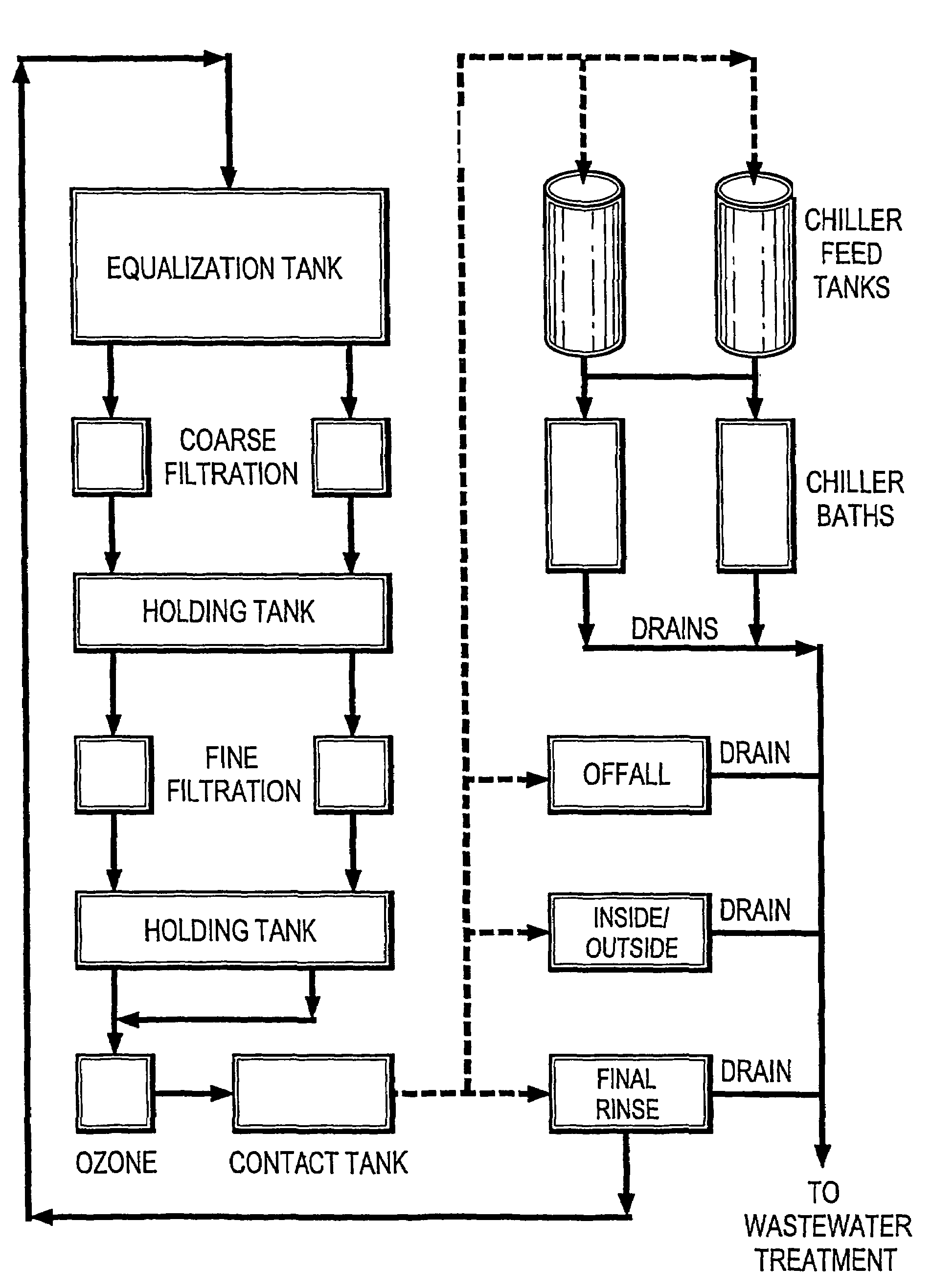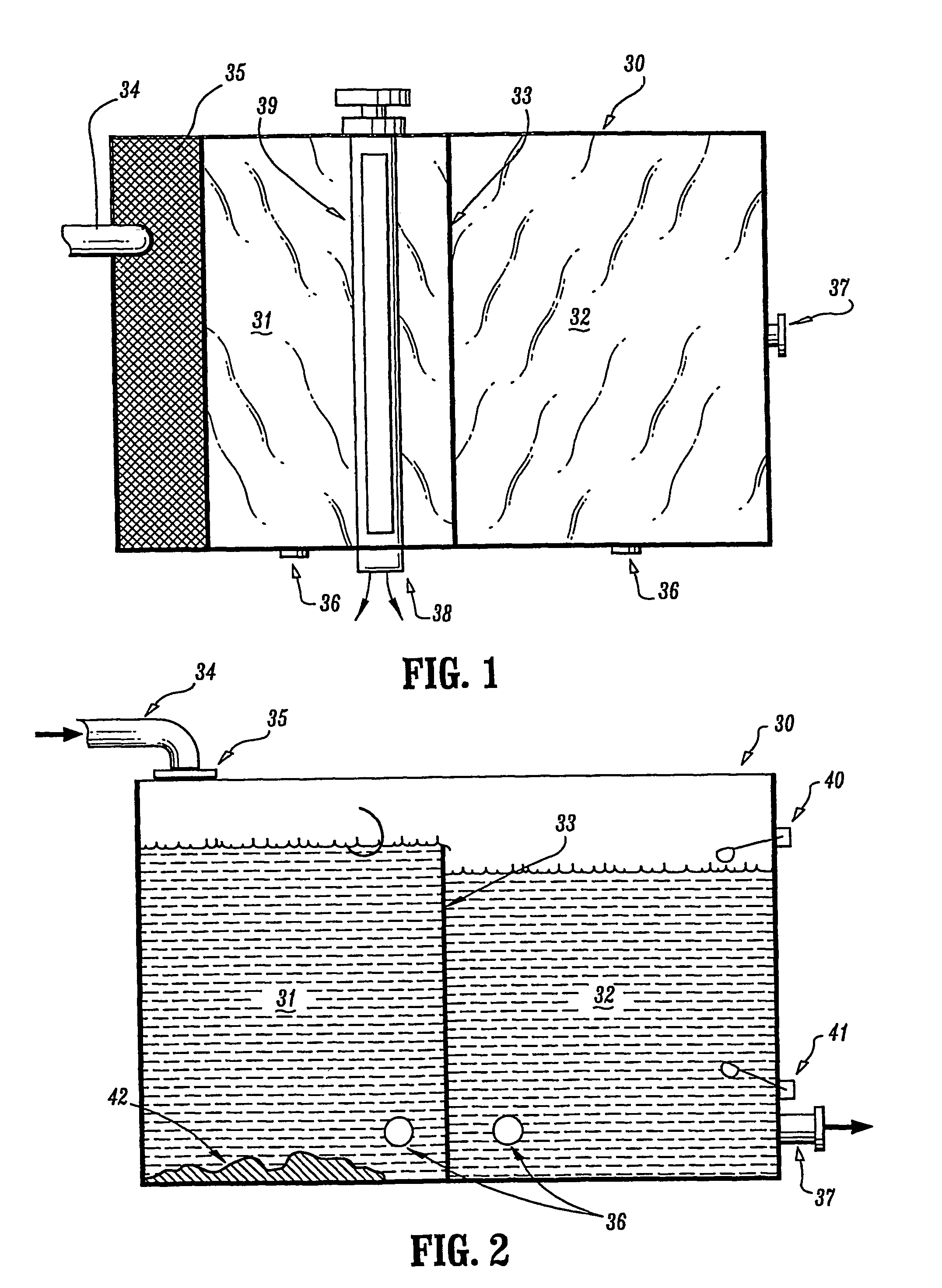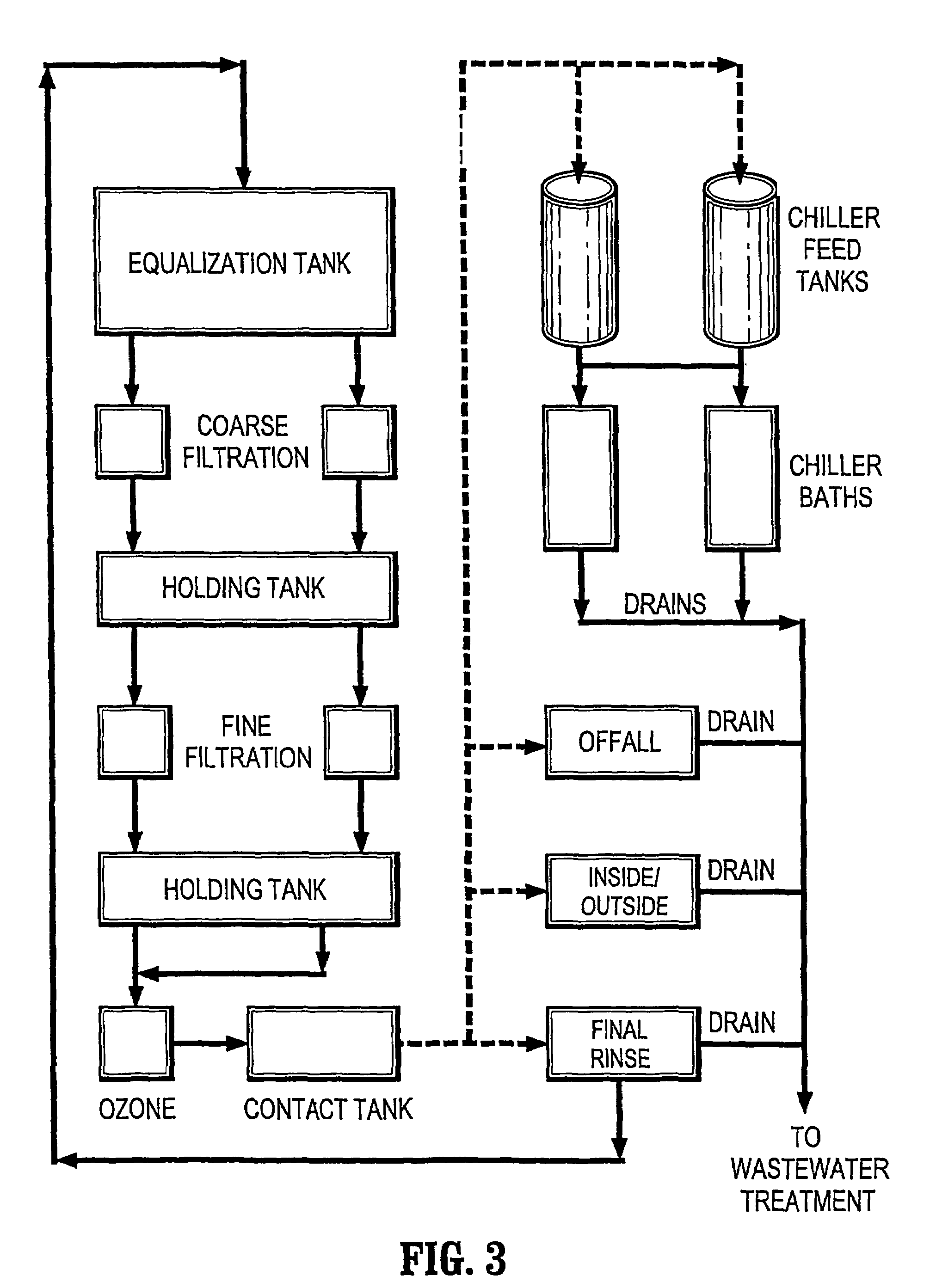However, the reaction of
chlorine with naturally occurring
organic matter (NOM) in the water can result in the formation of suspected carcinogens such as
chloroform, which is in the group of potentially dangerous disinfection byproducts called trihalomethanes.
Undesirably, any free
chlorine added to these high-demand waters rapidly reacts with the organic constituents and is consumed in seconds, becoming unavailable for disinfection.
These line operations typically consume large quantities of water, the characteristics of which change substantially during the process as
organic matter enters the water.
In addition, poultry industry interests have been actively seeking methods of reducing the consumption of water due to economic reasons and, additionally in some cases, because of limited availability of sufficient volumes of water to meet the processing requirements.
Prior food processes have not focused on the need to conserve water from an economic perspective and accordingly, while they may generally involve water reuse applications, their approaches have failed to address critical economic restrictions inherent in poultry and other food processing operations.
Unfortunately, the
recovery of used
chiller bath process water brings with it a very high
contamination burden requiring extensive treatment.
Unfortunately, such approaches have had some limited success in addressing the treatment challenges, they have to date proven to be of questionable economic value to the industry.
It has been discovered that such solutions are either unnecessarily complex or are unnecessary altogether.
While the technical approaches may differ from invention to invention, they share the common disadvantages that the source of their water (i.e., bird
chiller water) contains a significant and high quantity of organic contaminants as compared to the sources that are identified by the invention herein, and the volumes available for
recovery are limited strictly to the USDA mandated 0.5 gallon per bird limitation.
Unfortunately, the use of free
chlorine in prior art methods does not reduce pathogens to the desired levels and creates environmental and workplace hazards including hazardous off-gassing within the plant.
Unfortunately, the potential for cross
contamination of carcasses in this communal bath is very high.
However, the organic loading of water in a typical
chiller remains very high in
spite of the added water.
The challenge of treating this organic load within the water is very difficult and unmet with prior art disinfectants.
Greater oxidation speeds often cause higher microbial kills.
Unfortunately, the very characteristic that normally makes highly reactive oxidants effective disinfectants in drinking water minimizes their effectiveness in the environment of a poultry chiller or other process
water environment having high organic load.
When chlorine combines with another substance, it ceases to be highly oxidative and loses its ability to
bleach.
Unfortunately these compounds are most effective at low pH, which can be destructive to food processing equipment.
There can also be worker safety issues involved in the handling of such compounds.
Unfortunately the
disinfectant that is produced by combining the raw materials (
sodium chlorite and
acetic acid) is generated at a very low pH (about 2.5) which can be destructive to food processing equipment.
Off-gassing, which can be detrimental to
worker health, can also result from the mixing of chlorine and acidified
sodium chlorite within the processing plant.
There have also been reports of negative impacts to the quality of poultry treated with this compound.
Despite these various chemistries, they are unfortunately used only for on-line reprocessing and in a few selected cases also in the chiller.
They suffer from the
disadvantage of only being able to be used at one or possibly two specific points in the processing line and not throughout the plant.
Unfortunately, none of these above disinfectants have been able to replace chlorine throughout the food processing plant.
While biocides that are not highly oxidative may not have the same disinfectant qualities of those that are highly oxidative in pure water, their use within certain environments offers the potential to be far more effective because such biocides are not as readily consumed by the resident chlorine demand.
Water in the scalder has an extremely high organic load, high microbial
population and high temperature.
The scalder is a communal tank holding numerous carcasses at any point in time, which like the chiller provides great potential for cross
contamination.
The conditions in the scalder (i.e., high organic load and high temperature) cause the rapid consumption of free chlorine, which significantly degrades the disinfection potential of the chlorine.
Unfortunately, the lack of an active residual disinfectant will enable bacterial regeneration in
water storage and distribution systems.
This is in contrast to prior approaches which have failed to appreciate the benefits associated with
pH control,
multiple point controlled treatment, or even the unexpected advantages to be gained by reducing the organic loads within such process water.
Many sanitizers, especially those that are highly oxidative, cannot be used with electrostatic sprayers, since the electrical charge can completely eliminate their killing power before they reach the targeted surface.
 Login to View More
Login to View More 


